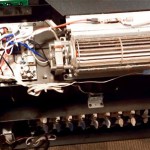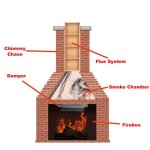Pellet Stove Insert: Replacing a Gas Fireplace
The decision to replace a gas fireplace with a pellet stove insert involves careful consideration of various factors, including heating needs, cost, environmental impact, and aesthetic preferences. Both gas fireplaces and pellet stove inserts offer distinct advantages and disadvantages, making the choice highly dependent on individual circumstances.
A gas fireplace offers convenience and ease of use. The ignition is typically instant, providing immediate heat at the touch of a button or flick of a switch. Gas fireplaces often require minimal maintenance compared to other heating appliances. The flame is visually appealing, mimicking the look of a traditional wood-burning fire, although the heat output and efficiency may vary depending on the model.
A pellet stove insert presents an alternative heating solution that utilizes compressed wood or biomass pellets as fuel. These inserts are designed to fit into existing fireplace openings, offering a more efficient and environmentally friendly heating option. While requiring more hands-on operation than a gas fireplace, pellet stove inserts can provide significant cost savings in the long run, particularly in regions where natural gas prices are high.
Understanding Heating Needs and Efficiency
Before committing to a replacement, it is crucial to accurately assess the heating requirements of the space. Consider the square footage of the area to be heated, insulation levels, and climate conditions. Gas fireplaces are typically rated by BTU (British Thermal Units) output, indicating the amount of heat produced per hour. Pellet stove inserts are similarly rated, but their efficiency ratings are often higher than gas fireplaces. Efficiency refers to the percentage of fuel energy that is converted into usable heat. A higher efficiency rating translates to lower fuel consumption and reduced heating costs.
Gas fireplaces, depending on the model, can range in efficiency from 60% to 80%. Direct vent gas fireplaces tend to be more efficient than vent-free models, as they draw combustion air from outside and vent exhaust gases directly outdoors. Vent-free gas fireplaces, while convenient and easy to install, can contribute to indoor air pollution and moisture issues if not properly ventilated. Pellet stove inserts, on the other hand, commonly achieve efficiency ratings of 75% to over 85%, making them a more efficient heating option compared to many gas fireplace models. This higher efficiency is due to the controlled combustion process and the use of a blower to circulate heated air throughout the room.
The type of gas fireplace must be considered. Natural gas fireplaces are connected to a natural gas line, while propane fireplaces utilize a propane tank. Propane is typically more expensive than natural gas, which can affect the overall cost of heating. Pellet stove inserts rely on electricity to power the auger, blower, and electronic controls. While electricity consumption is relatively low, it is essential to consider the potential impact on energy bills during power outages. A backup power source, such as a generator or battery system, may be necessary to ensure continuous operation in such situations.
Another factor to consider is the heat distribution. Gas fireplaces tend to radiate heat directly from the firebox, creating a localized hot spot. Pellet stove inserts, with their integrated blowers, distribute heated air more evenly throughout the room. This can result in a more comfortable and consistent temperature, particularly in larger spaces.
Cost Analysis: Initial Investment and Long-Term Savings
The initial cost of a pellet stove insert can be higher than that of a gas fireplace. The price of the insert itself, along with installation costs, including venting and electrical work, must be factored in. Gas fireplaces also require installation, which may involve running gas lines and ensuring proper ventilation. The cost of installation can vary depending on the complexity of the project and local building codes.
However, the long-term cost savings associated with a pellet stove insert can be substantial, particularly in areas with high natural gas prices. The cost of fuel – natural gas, propane, or wood pellets – is a significant factor to consider. Wood pellets are often less expensive than natural gas on a BTU basis, making them a more economical heating option. The price of wood pellets can fluctuate depending on seasonal demand and availability, but they are generally considered a renewable and sustainable fuel source.
Maintenance costs are also an important consideration. Gas fireplaces typically require annual servicing to ensure proper operation and prevent potential safety hazards. This servicing may include cleaning the burner, inspecting the venting system, and testing the gas connections. Pellet stove inserts require more frequent cleaning and maintenance. The ash pan needs to be emptied regularly, and the venting system should be inspected and cleaned periodically to prevent creosote buildup. Despite the more frequent maintenance, the overall cost of maintaining a pellet stove insert may be lower than that of a gas fireplace, depending on the frequency of use and the cost of professional servicing.
Furthermore, rebates and incentives may be available for installing a pellet stove insert, particularly in areas that promote energy efficiency and renewable energy sources. These incentives can help offset the initial cost of the insert and make it a more attractive option. Government programs, utility companies, and state agencies often offer rebates for qualifying energy-efficient appliances.
Environmental Considerations and Sustainability
Environmental concerns are increasingly influencing heating choices. Gas fireplaces burn fossil fuels, which contribute to greenhouse gas emissions and air pollution. While modern gas fireplaces are designed to be more efficient and produce fewer emissions than older models, they still have a carbon footprint. Vent-free gas fireplaces, though convenient, release combustion byproducts directly into the indoor air, which can pose health risks to occupants.
Pellet stove inserts offer a more sustainable heating option. Wood pellets are made from renewable biomass resources, such as sawdust and wood chips, that would otherwise be discarded. Burning wood pellets releases carbon dioxide, but this carbon dioxide is offset by the carbon dioxide absorbed by the trees during their growth cycle. This makes wood pellets a carbon-neutral fuel source, assuming sustainable forestry practices are followed.
Pellet stove inserts also produce lower emissions than traditional wood-burning stoves and fireplaces. The controlled combustion process and the use of a catalytic combustor in some models help to reduce particulate matter and other pollutants. However, it is essential to choose a certified pellet stove insert that meets EPA emission standards to minimize its environmental impact. Opting for a higher quality pellet fuel will also result in a cleaner burn, reduced ash buildup, and improved overall efficiency.
Beyond emissions, the environmental impact of fuel production and transportation must also be considered. Natural gas and propane require extraction, processing, and transportation, which can have significant environmental consequences. Wood pellets are typically produced locally, reducing transportation emissions and supporting local economies. However, it is important to ensure that the wood pellets are sourced from sustainably managed forests to prevent deforestation and habitat loss.
Ultimately, the choice between a gas fireplace and a pellet stove insert depends on individual priorities and circumstances. If convenience and ease of use are the top priorities, a gas fireplace may be the preferred option. However, if cost savings, environmental sustainability, and higher heating efficiency are paramount, a pellet stove insert may be a more suitable choice. Careful consideration of heating needs, cost analysis, and environmental impact is essential for making an informed decision.

Pellet Stove Inserts Turn Drafty Fireplaces Into Heaters Complete Home Concepts

Pellet Fireplace Inserts Lopi Stoves Made In Usa

Pellet Stove Inserts The 1 Fireplace

Wood Stoves Pellet Gas Fireplace Inserts

Pellet Fireplace Inserts Lopi Stoves Made In Usa

Convert From Wood To Gas With A Insert The Kernel Burner

Fireplace Insert Installation Wood Inserts Gas Pellet And Electric

Fireplace Inserts Gas Wood Pellet Electric Best Fire Hearth Patio

Fireplace Insert Stoves Wood Gas Pellet Traditional Baltimore Maryland

Pellet Fireplace Inserts Lopi Stoves Made In Usa
Related Posts








